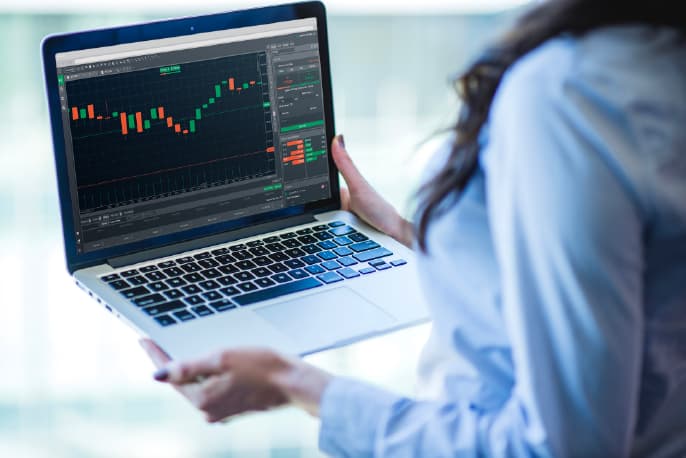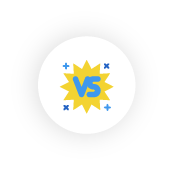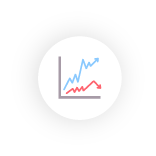The Range Bars chart is a type of chart that eliminates time from the calculations and only considers symbol price.
The bars based on price only, and not the time or other data, provide another way of viewing and utilizing the volatility of financial markets.
Range bar charts can have any number of bars printed during a trading session: during times of higher volatility, more bars will appear on the chart, but during periods of lower volatility, fewer bars will print.
The number of range bars created during a trading session also depends on the symbol being charted and the specified price movement for each range bar.
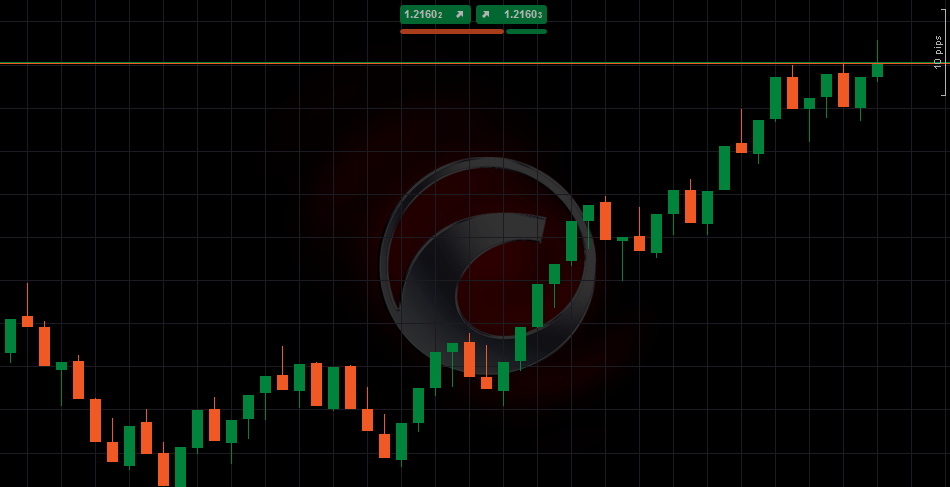
In Ananda, to switch your currently opened chart to the Range Bars, proceed to the timeframe in the upper left, and in the Range section, select from 1 to 10000 pips.
Depending on your choice, your Range chart will be built considering the respective number of pips.

In the Range bar, all price bars are of equal length. So for example, if you set a 10 pip range bar, then all bars in the chart are of 10 pips range (high to low, or low to high).
In Range bars, the close of a bar is always equal to the open of the next bar. The range is measured as high and low and not close.
In other words, each bar has a high/low range that equals the specified range, each bar opens outside the high/low range of the previous bar, and each bar closes at either its high or low.
Each range bar is characterized with the same price increment and its closure takes place at the range’s high or low, regardless of where it was opened.
Therefore, if you want to show the price movement by the specific number of ticks up or down in the chart, then you should set this value in the period of a range chart.
Range bars, as well as Renko, display the price in a combined form, reducing much of the noise that occurs when prices move back and forth between a narrow range to a single bar or two.
As Range Bar charts eliminate much of the noise, they become very useful when it comes to drawing trendlines. In Ananda, areas of support and resistance are emphasized automatically; hover over the trend line to see the details in the pop-up directly on the chart.
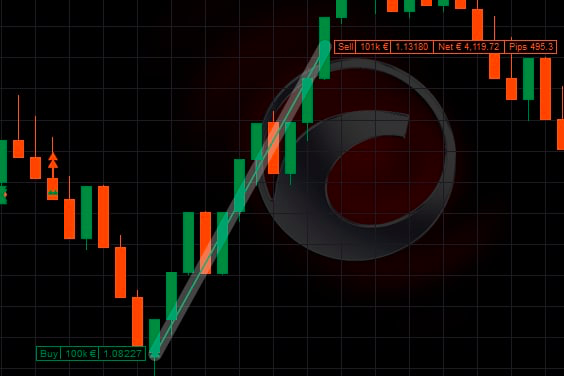
Usage #
The main benefit in the usage of the Range type of charting is viewing the price in the combined form.
The noise is mostly eliminated to fit one or two bars, as each next bar won’t be built until the specified price range is satisfied.
That’s why the trendlines are very often used in this type of chart. The support and resistance can be highlighted with the horizontal trendlines; trending periods can be highlighted with the up and down-trendlines.
Example
For example, the screenshot below shows trendlines on a 10 pips EURUSD Range bar chart. The horizontal trendlines display that the more times price bounces back and forth between the range, the more powerful the move may appear when the price breaks through.
This is a common practice for touches along up and down trendlines: the more times price touches the line, the greater is the potential move once price breaks through.
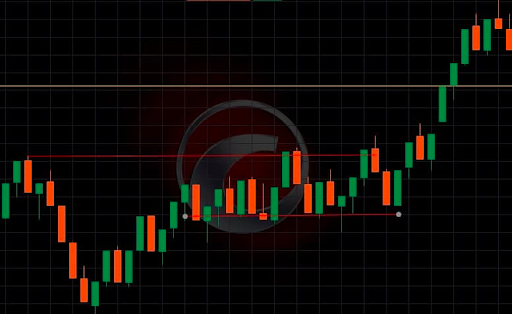
The next example shows a price channel of two parallel down trendlines on a 1 pip EURUSD Range bar chart. Trendlines are a natural fit to range-bar charts; with less noise, trends may be easier to detect.
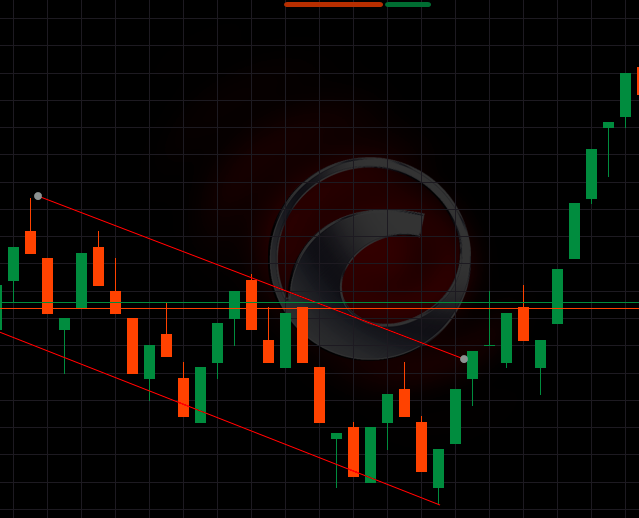
The biggest pro of a Range bar is that the information displayed on it is directly relevant to the actual trade. When using a time-based technical signal, your trade is late by definition.
The price footprint must first occur before you see it. Traders prefer Range bars because unlike a chronology-based signal, a Range bar is the actual price parameter a symbol has established over an undefined amount of time.
Example
For example, a 10-pip Range bar candlestick shows the trader a definitive trading range. A break above or below this range isn’t a “violation” but a price expansion.






